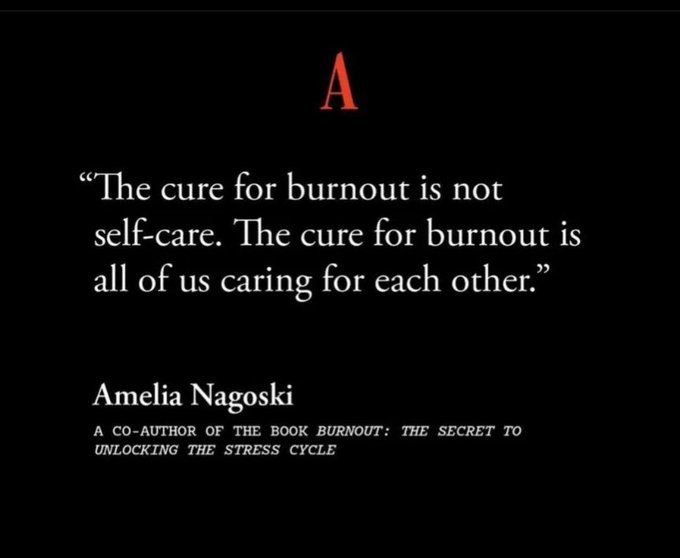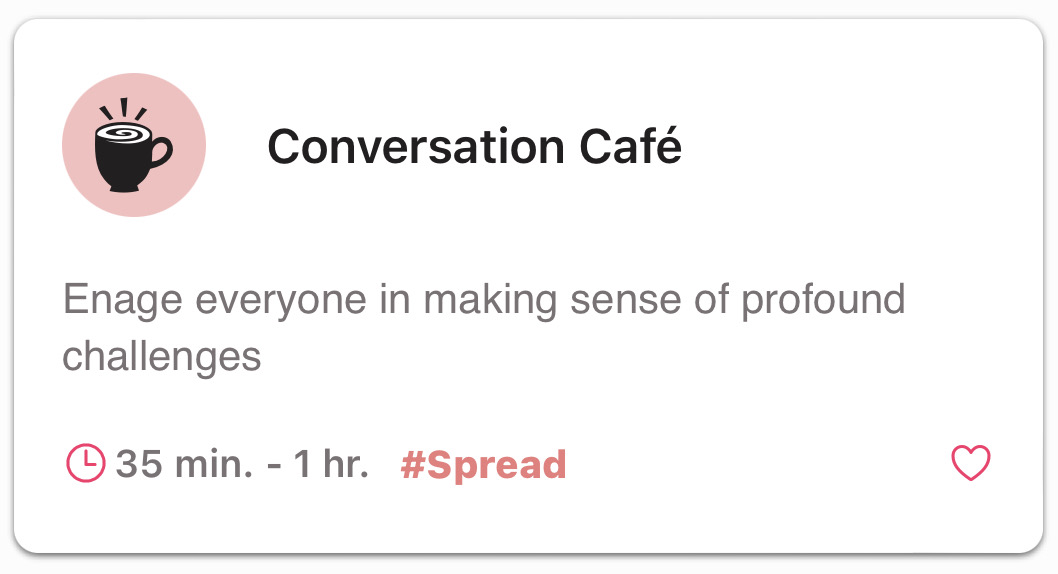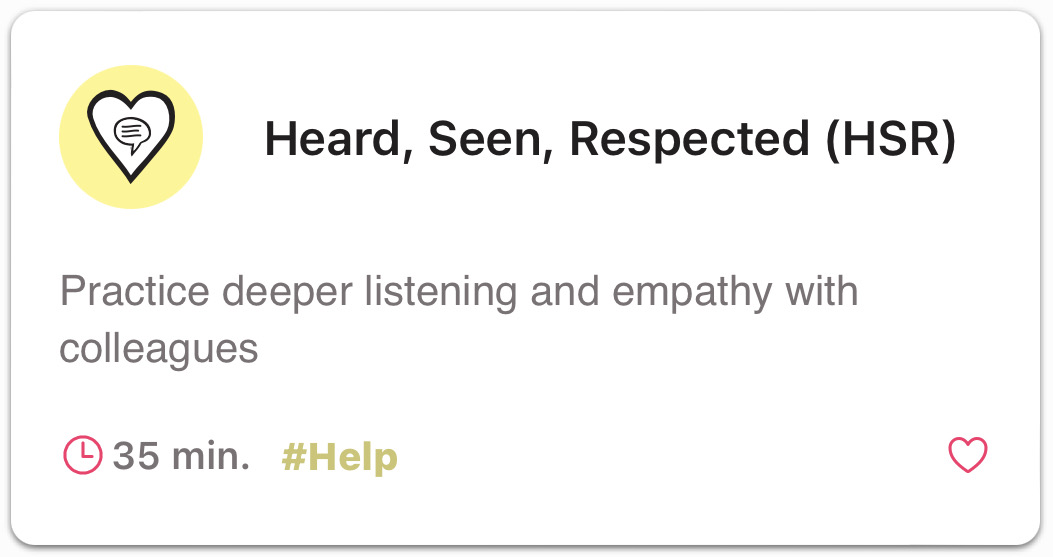Note: This is essay 4 of 4 for the BanklessDAO Writers Cohort. This draft is a step in a process intended for gathering feedback and not intended to stand alone as a published work.
I begin this 4th and final piece of this “Slow Lane” series by revisiting a quote I shared in Week 1’s “A Cultural Crossroad”. In a GravityDAO Twitter Space titled “Welfare at Work in Web3”, guest speaker @Loie_Low , former Operations lead at Gitcoin, shared a quote that I believe speaks to the soul of web3 and a defining crossroads for our species.

Loie continues by saying, “Getting to connect and know each other as humans…It is so endlessly important. Because that is the foundation to being able to talk about the bigger things in life.” She then goes on to share about a specific practice she cultivated at Gitcoin.
“Something we did in Gitcoin is we had a weekly gathering hour which was a blend of social time and educational time. But the goal was connection throughout all of that. We would lead little games or connection exercises. A lot of them we designed specifically for our own group which was a really fun experiment for knitting together remote teams and helping them feel a sense of togetherness even while being so far away….Carving out this time for an hour, every week, yeah, think about that…it’s hard but it’s so so worth it…..I highly recommend if you are in any community, spending most of your time producing something, take this time, at least an hour a week, to connect with each other, and build intentional ways to do so.”
Loie’s comments and example arrived as music to my ears, an affirmation of one of my strongest convictions. Committing to a consistent time-and-space to BE WITH the people that we DO WORK with applies an ointment to the relationships of the persons involved. The practice of meeting and affirming one another upon the common ground of our humanity is the key to the quality of our treatment of one another. Furthermore, as a consequence of such “touchstone” practices the work we produce together flows more easily, creativity flourishes and difficulties we encounter can be worked through more efficiently. The hour per week, though it may first appear as taking time from busy schedules, actually gives back more than can be counted.
World Changing Leadership
If DAOs are to succeed at revolutionizing the world of work, slow lane innovation and leadership will need to be a part of it. In his article “Finding Freedom and Agency in DAOs”, Bankless writer siddhΞARTa offers a fresh perspective on leadership by citing a tweet from Coordinape co-founder tracheopteryx in which “trach” writes, “I think of DAOs as leaderful organizations, where everyone is a leader. The insight that "the leader is the one who knows what to do next" is deeply profound and frankly world-changing.”
Sometimes the ones who know what to do next will be persons entrusted with formal leadership roles. Examples may include department heads, team leaders, or in the case of DAOs, guild role holders. From these positions of formal responsibility they will be in the best position to install anchor practices like Gitcoin’s weekly gathering. As important as these leaders are, I believe the greatest potential for a new wave of leadership to flourish is from the ground up. And I believe a growing slow lane will present extraordinary opportunities for this leadership to emerge.
DAOs, in many respects, will emerge as the product of countless conversations ….. conversations done well, conversations gone awry and conversations avoided. Leaders, in this context, are persons who can sense issues and opportunities and initiate conversations that move things forward.
Tackling the Blockers
The possibilities here are endless, but how many times have we all thought, “if I could just get so and so together to talk about x, y or z” we could breathe new life into this situation”. How many times do we dream up but hold back from creating these conversations? What stops us?
I submit that the two things that most stop us are hierarchies and know how, or lack thereof. First, depending on who we want to involve, we may not feel like it is our place, that we have “permission”, to initiate risky conversations. Second, even if we have the green light, most of us don’t know how to do such conversations well. I believe that the ingredients are emerging to address these two obstacles and that doing so will be a key to fulfilling the revolutionary potential of Web3. Let me explain.
Though the rise of the term “permissionless” is typically used to refer to the blockchain, another version of it is showing up in DAO culture. This version recognizes experimentation as essential to emerging coordination structures, thereby rewarding initiative that might be frowned up as “out of line” in traditional organizational cultures. More specifically, if a DAO member believes there is an opportunity to have a breakthrough conversation, he/she/they is encouraged to present a proposal to the guild or the DAO. There is no need to wait for a formal leader to make it happen.
The second ingredient that is in place is the advent of what I will call social technology. Social technologies provide contextual frameworks, invitation guidelines, and meeting procedures best suited for delivering results relative to conversation purposes. Breakthrough conversations are not as simple as just getting people together to brainstorm or hash things out. To the contrary, If permissionless cultures may be said to empower DAO members with the freedom to initiate critical conversations, social technologies empower them to conduct them well.
Slow Lane Meets Liberating Structures
Of the many social technologies emerging, I find the suite of 33 Liberating Structures offered by Henri Lipmanowicz and Keith McCandless to be among the most compelling. As referenced on their website, their work begins with the recognition that, “Conventional structures are either too inhibiting (presentations, status reports and managed discussions) or too loose and disorganized (open discussions and brainstorms) to creatively engage people in shaping their own future.” Liberating Structures fill this gap.
“Liberating Structures are quite simple and easy to learn. They can be used by everyone at every level, from the executive suite to the grassroots. No lengthy training courses or special talents are required. Mastery is simply a matter of practice. LS routinely unleash a vast reserve of contributions and latent innovations waiting to be discovered.” (liberatingstructures.com)
As just two examples, consider their Conversation Cafe and Heard, Seen, Respected structures.


Though initially intended for irl workplace environments, there is growing recognition in the Web3 space of their potential suitability in DAOs. I believe the opportunity for this implementation will begin growing exponentially as permissionless leadership cultures spread, emerging leaders look for novel ways to create impact and Web3-native meeting-space technologies improve.
In concluding this piece, and this 4-part series, I’ll end with a final, favored quote from the Liberating Structures site.
“Liberating Structures start with something so simple and essential as not to seem worth doing and end with something so powerful and profound that it hardly seems possible.”
When I read this I cannot help but notice a resonance between this description of Liberating Structures and how, I suspect, many people might at first regard the prospect of spending more time in the slow lane.
“Something so simple, and so essential, as not to seem worth doing.”
And the gratitude I feel for the blessing of my time here.